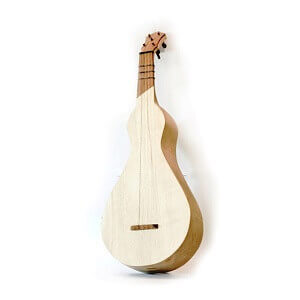Viola de Cocho
 The viola de cocho is a singular plucked string instrument from Brazil. It is typical in the states of Mato Grosso and Mato Grosso do Sul and has been designated a part of Brazil's intangible national heritage by IPHAN, the Brazilian institution responsible for the preservation of the national cultural heritage. It is unusual in that although it has only three frets at most and is left unvarnished. The Portuguese word cocho, used by farm labourers, refers to a hollowed-out log forming a sort of container. The cocho is widely used, for example, to provide salt for cattle on grassland farms.
The viola de cocho is a singular plucked string instrument from Brazil. It is typical in the states of Mato Grosso and Mato Grosso do Sul and has been designated a part of Brazil's intangible national heritage by IPHAN, the Brazilian institution responsible for the preservation of the national cultural heritage. It is unusual in that although it has only three frets at most and is left unvarnished. The Portuguese word cocho, used by farm labourers, refers to a hollowed-out log forming a sort of container. The cocho is widely used, for example, to provide salt for cattle on grassland farms.
The viola de cocho is carved from one single piece of (light)wood (the body, neck and tuning head), and hollowed out. A thin piece of light wood is glued to the front. A similar but darker wood is used for the fingerboard (flush with the front) and a veneer glued on the peghead, which bends slightly backwards. There is no soundhole. The instrument is left plain : no varnish at all - so it looks unfinished. The top of the body used to be more rounded, but the latest models seem to be with a sharper curve.